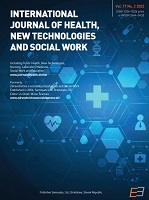COVID-19 Pandemic and Shoulder Joint Rehabilitation in Patients with Impingement Syndrome
COVID-19 Pandemic and Shoulder Joint Rehabilitation in Patients with Impingement Syndrome
Author(s): Ján Mašán, Silvia Golská, Karol Horňáček, Kristián MichalecSubject(s): Health and medicine and law, Demography and human biology
Published by: SAMOSATO, s. r. o., Bratislava, Slovensko - MAUREA, s. r. o., Plzeň, Česká republika
Keywords: COVID-19 pandemic; frozen shoulder; impingement syndrome; Oxford Shoulder Score; shoulder joint; pain; rehabilitation;
Summary/Abstract: Introduction: The consequences of the COVID-19 pandemic largely result in disorders of the musculoskeletal system and one of them is a problem in the shoulder joint. Many problems have been postponed due to the measures and regimes in place and have not been resolved in a timely manner, which has led to the development of „ frozen shoulder” syndrome, even in impingement syndromes. Aims: The main aim of this work was to point out the significant influence of rehabilitation options in patients with impingement syndrome. In this work, we tried to draw attention to the deterioration of quality of life caused by shoulder problems during the COVID-19 pandemic, and we wanted to use selected rehabilitation options to improve the range of motion in the shoulder into flexion, abduction and reduce pain. Material and methods: The work is prepared for a prospective study. The study was carried out in a private rehabilitation facility in Piešťany. All measurements lasted from January 1, 2020 to August 22, 2020. The group consisted of 20 patients diagnosed with impingement syndrome, who used manual therapy, kinesiotherapy, electrotherapy and kinesiotaping. We used the Oxford Shoulder Score questionnaire to find out the effect of impingement syndrome on quality of life. We evaluated the overall pain using a numerical pain scale. Results: We evaluated the obtained results using descriptive statistics. Using the questionnaire, we were able to confirm how this syndrome affects the quality of life. Due to the chosen methods, the range of motion to flexion and abduction in the shoulder joint was improved. Due to the combination of methods, the overall pain was also significantly reduced. Conclusion: Shoulder problems are the second most common musculoskeletal disorder during COVID-19 after back pain. However, not all studies to date have been able to specify what its best treatment is, whether manual treatment, exercise therapy, or the application of electrotherapy or a combination of methods is appropriate. In order to achieve better results, we recommend using the mentioned rehabilitation methods within the therapy, not individually but in combination.
Journal: International Journal of Health, New Technologies and Social Work
- Issue Year: 17/2022
- Issue No: 2
- Page Range: 41-54
- Page Count: 14
- Language: English

